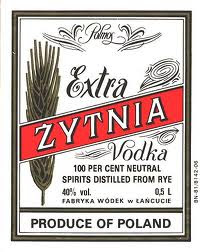There’s a pretty interesting older decision about ownership of the “MG” (as in cars) trademark that serves up some good drafting lessons. The story starts with the failure of the MG Rover Group, owner of the “MG” mark. The Nanjing Automobile (Group) Corporation (“NAC China”) bought the MG brand, but a man named William Riley claimed to have purchased the “MG X Power” brand. The battle was on.
The “X Power” trademark was for a new vehicle, also known as the “MG SV” and “MGX80,” that had been under development. NAC China did not take the X Power business. Instead, William Riley got the completed vehicles, chassis, spare parts and other assets for this vehicle. He also named his acquiring company “MG Sports and Racing Europe Limited” (SREL), very similar to the name “MG Sports and Racing Limited” previously used by the predecessor company for this portion of the business. So, the question was whether he got the right to use “MG” with this part of the original MG car business.
The England and Wales High Court (Chancery Division) examined the two relevant transactions, the NAC China acquisition in 2005 and the subsequent SREL acquisition in 2007. It had nothing positive to say about Riley’s claim that he acquired any rights to use “MG” at all:
| I am of the clear view that it is impossible to construe that contract in the manner for which the defendants contend. In short, it was not effective to transfer (and did not seek to transfer) the disputed marks to SREL and the defendants have never had any credible basis for suggesting otherwise. |
The court exhaustively evaluated and rejected all the defendants’ contractual arguments. It was particularly unhappy with the trademark schedule, where, it turns out, Mr. Riley omitted the letters “MG” from the description of the scheduled “X Power” marks. The court didn’t mince words:
| What is undeniable is that, for no good reason, MG Rover Group were, under the guise of the misleadingly worded schedule 6 (misleading, that is, to anyone unaware of the actual content of the registrations referred to), passing to SREL certain trade marks bearing the letters MG when the body of the 2007 Agreement made it abundantly plain that such rights were not to pass, including in particular any right to the MG X POWER mark. |
So Mr. Riley loses in a big way his argument that the rights were conveyed to him. What’s more interesting to me is that there was enough ambiguity in the 2005 NAC China transaction to leave a gap he could exploit. Since NAC China did not want to acquire the X Power portion of the MG business, its acquisition excluded:
| (i) the business and assets (including intellectual property) relating solely and exclusively to the MG Sport and Racing business … including MGSV, MGXPower and MGX80 and (ii) all intellectual property rights (including design rights but excluding trade marks) to MGSV and its variants; |
This exclusion, referring to “MGSV,” “MGXPower” and “MGX80” in subparagraph (i), but only “MGSV” in subparagraph (ii), leaves room for the argument that subparagraph (ii) does not claw back the MG X Power mark to NAC China since that subparagraph related only to “MGSV,” something different from “MGXPower.” Worse, the MG X Power marks were also not scheduled as trademarks NAC China acquired.
The fate of the MG X Power marks was sufficiently ambiguous that NAC China had to do some repair work after the fact. An in house attorney, originally with MG Rover Group and then with the UK subsidiary of NAC China, noticed that ownership of the UK and CTM registrations for the MG X Power marks had been changed in the trademark registry even though they weren’t scheduled. This led to returning the record ownership to MG Rover Group until the matter was straightened out. Then NAC China learned that the X Power business was to be sold, but made it clear to the liquidators that it believed it owned the MG X Power marks. The liquidators agreed not to sell them without NAC China’s prior approval.
Ultimately the court held that the 2005 transaction transferred the MG X Power marks to NAC China, but acknowledged the problem:
| Although this is far from clear, I consider that the better view of clause 2.2.13, given the use made of the MG X POWER mark, is that it was not within the assets excluded from sale to NAC China …. I cannot pretend, however, that the position is clear. Not only, as [defendant’s counsel] was at pains to emphasise, was this significant mark (significant, that is, to SRL) not listed in schedule 4 but if the intention had been to pass to NAC China (and except from the excluded assets) all trade marks which included the letters MG (a point which underlay much of what [plaintiff’s counsel] submitted) the Agreement could very easily have said so and done so moreover in sub-clause (i). Sub-clause (ii) remains an oddity. That said, I do not think it operated to exclude the MG X POWER mark from the trade marks to which it cryptically referred. Indeed, it is not at all apparent to which marks the exception from the exclusion referred if not to the MG X POWER mark. |
The little mistakes that come back to haunt you.
IP Finance article on this and other pitfalls in acquiring trademarks out of a liquidation.
Nanjing Automobile (Group) Corp. v. MG Sports and Racing Europe Limited, [2010] EWHC 270 (Ch) (19 Feb. 2010).

This work is licensed under a Creative Commons Attribution-No Derivative Works 3.0 United States License.







